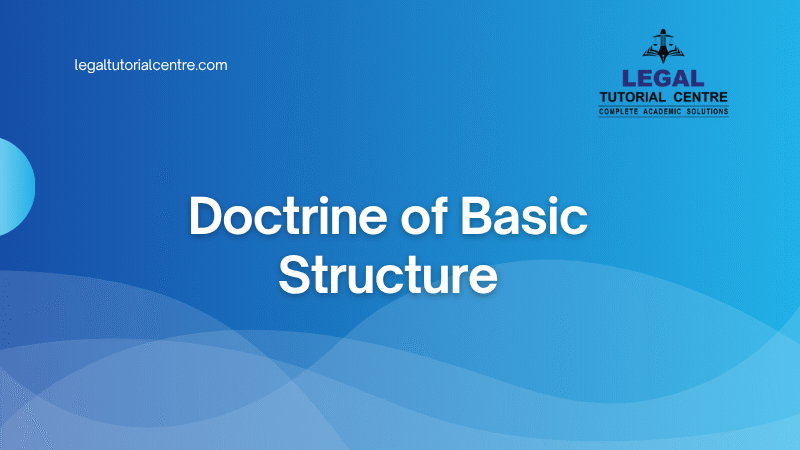The Doctrine of Basic Structure is a judicial principle that limits the amending power of the Parliament under Article 368 of the Constitution. According to this doctrine, Parliament can amend the Constitution, but it cannot alter or destroy its “basic structure” or essential features.
Origin of the Doctrine:
The doctrine was laid down by the Supreme Court in the landmark case:
Kesavananda Bharati v. State of Kerala (1973)
Citation: AIR 1973 SC 1461
Bench: 13-Judge Constitutional Bench
Verdict: 7:6 majority
This case overruled the earlier decision in Golak Nath v. State of Punjab (1967) which had held that Parliament cannot amend fundamental rights.
Key Principle Laid Down:
“While Parliament has wide powers to amend the Constitution under Article 368, it cannot alter the basic structure or framework of the Constitution.”
What Constitutes the Basic Structure?
The Supreme Court has not given an exhaustive list, but over various judgments, the following elements have been held to be part of the basic structure:
1. Supremacy of the Constitution
2. Rule of Law
3. Separation of Powers
4. Judicial Review
5. Republican and Democratic form of Government
6. Secularism
7. Sovereignty and Unity of India
8. Free and Fair Elections
9. Federalism
10. Independence of Judiciary
11. Fundamental Rights
12. Parliamentary system of government
Important Cases Related to the Doctrine:
1. Kesavananda Bharati v. State of Kerala (1973)
First case to formulate the basic structure doctrine.
Held that Article 368 does not give unlimited power to Parliament.
2. Indira Nehru Gandhi v. Raj Narain (1975)
Election laws were amended to validate Indira Gandhi’s election.
Held that free and fair elections are part of the basic structure.
3. Minerva Mills v. Union of India (1980)
Held that harmony between Fundamental Rights and Directive Principles is part of the basic structure.
Struck down clauses of the 42nd Amendment.
4. Waman Rao v. Union of India (1981)
Reaffirmed the doctrine and held that all constitutional amendments after 24 April 1973 (Kesavananda date) would be tested on the basis of the basic structure doctrine.
5. I.R. Coelho v. State of Tamil Nadu (2007)
Any law placed under Ninth Schedule after 1973 is also subject to judicial review if it violates basic structure.
Significance of the Doctrine:
Acts as a check on arbitrary power of Parliament.
Protects the fundamental character of the Constitution.
Maintains the supremacy of the Constitution.
Preserves democracy, rule of law, and rights of citizens.
Criticism of the Doctrine:
Not explicitly mentioned in the Constitution.
Critics argue that it gives too much power to the judiciary.
The term “basic structure” is vague and subjective.
Conclusion:
The Doctrine of Basic Structure is a powerful judicial innovation that safeguards the essence of the Indian Constitution. It maintains a balance between the flexibility and rigidity of the Constitution and ensures that the core values like democracy, secularism, and judicial independence are preserved even while allowing


